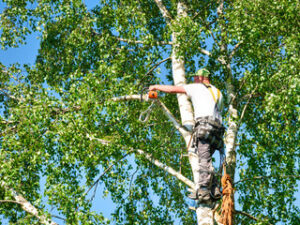Roofing Corpus Christi, TX, makes, repairs, and replaces many practical roofs. Today, there are 64 different kinds of roofing materials.
Roofing is very physically demanding work. Day-to-day tasks involve climbing up and down ladders all day to rip off old shingles and underlayment paper. The old material is then thrown in a dumpster, and the new material is applied.

The roof of a home is an integral part of its overall structure and provides protection from the elements. A wide range of roofing materials are available, from natural products such as thatch and slate to synthetics like asphalt shingles and rubber. The type of roofing material that works best for a particular home depends on local climate, aesthetic preferences, and cost.
Asphalt shingles are one of the most popular options for residential roofs because they are inexpensive and easy to install. They are also very durable and can withstand most weather conditions. Some homeowners choose to upgrade to architectural or premium asphalt shingles, which are heavier and offer better resistance to wind damage.
Tile roofs are another classic choice that offers a high-end look and a long lifespan. Clay and concrete tiles are fire-resistant and energy-efficient, and they come in a wide variety of colors and styles to complement any home. However, these roofs can be heavy and require special framing to support them.
Rolled roofing is another low-cost option that can be used on a flat or low-pitch roof. It consists of overlapping layers of a felt-impregnated asphalt base and mineral granules. This roofing material is often black, which can absorb heat and lead to increased cooling costs, but it is also available in white. Roll roofing is a good choice for utilitarian structures like workshops and sheds where appearance isn’t a priority.
Flat roofs require a waterproof membrane that is commonly made from ethylene propylene diene monomer (EPDM) or thermoplastic polyolefin (TPO). EPDM comes in large sheets to minimize the number of seams, which are then fastened with an adhesive or mechanically attached to the roof deck. TPO is similar, but it uses hot-air welding to join the sheets. Both of these membranes are fairly durable, but they don’t provide the same insulation as a solid roof.
Metal is another versatile roofing material that can be fashioned into shingles or shakes. These are made from stamped metal and finished with a baked-on coating or mineral granules to resemble other roofing materials. Metal is strong and lightweight, and it can last for 30 to 50 years.
Roofing Installation
When roofers start a job, they first lay tarps over the entire area to protect the landscaping and flooring inside the home. They also cover any open drains to prevent roofing debris from blocking the pipes. After that, they take measurements and cut the roofing materials to size with a saw or other power tool. This part of the process can be messy and tedious as the workers must be careful not to tear or puncture any underlying structures.
Once the underlayment is in place, the roofers can begin to install the shingles. They typically start at the bottom edge of the roof and work their way up, overlapping each row with the next by six inches or more. This creates a watertight seal that defends the home from moisture penetration and rot. Once the shingles are in place, roofers may apply a vapor retarder to slow down the transfer of heat and moisture to the interior of the home.
Other steps in the roofing installation process include waterproofing valleys, which are the areas where slopes meet and form a “V” shape. They do this by installing underlayment and felt paper in these areas, as well. In addition, they add flashing around chimneys, dormers and other spots on the roof to prevent water leaks at those vulnerable points. Finally, they install ridge vents and gable vents to provide proper ventilation for the roof, which helps regulate the temperature in the home and reduce energy costs.
Roofing is very physically demanding work that requires a good deal of stamina and strength. Workers must be comfortable climbing ladders to reach the roof, and they often work in very hot weather conditions. Ladder safety is a major concern, and roofers must follow strict safety guidelines to prevent falls. They must be skilled at using a variety of tools, including a hammer and a nail gun for installing shingles and underlayment, and a caulking gun to apply sealant.
Roofers must also be knowledgeable about the various roofing materials available and their varying prices, as they must make recommendations to customers based on their specific needs. In addition, they must manage inventory and purchase new equipment or supplies as needed. They also need to be familiar with accounting practices, as they must keep track of payroll and other financial records.
Roofing Repair
Before a roofing contractor begins a repair job, they should perform an inspection to determine the extent of damage. This can be done by walking the entire roof surface, examining it from inside the house, and using water to test for entry points and leak locations.
Once this is done, the roofing contractor can begin removing damaged materials and installing new ones. This process can take from a few hours to several days depending on the extent of the repair work. The new materials include not just shingles, but also plywood, underlayment, and flashing. Often, it is necessary to replace the existing plumbing vent boots as well. These can be all plastic, all metal, or a combination of both. They can crack or rot, which allows water to enter the house along the pipe.
If the leak is at the soffit/main roof joint, the contractor can remove the shingle and then slide a strip of adhesive ice-and-water barrier under the soffit and over the main roof edge. The ice-and-water barrier should overlap another piece laid below it at the valley.
It is important for a roofing contractor to be skilled in the proper use of tools and have a solid understanding of construction practices. A good roofer should be able to work in teams and should be comfortable climbing on ladders. Roofing is a physically demanding job that requires a high level of skill. There are many potential hazards associated with this work, so roofing contractors should follow a multi-layered approach to safety that includes training, personal protective equipment, and a clear contract that establishes the contractor’s legal liability in the event of an accident or injury.
Roofing Maintenance
A maintenance program should be developed by a qualified roofing professional to provide regular, verifiable roof inspections and repairs. This ensures that problems are detected and repaired before they become serious and costly. A detailed maintenance checklist should be prepared that is tailored to each facility’s specific requirements. This includes the inspection of all roofing components including flashings, skylights, perimeters, walls, penetrations and equipment curbs. This is particularly important as a majority of leaks occur at these locations. Trimming trees that hang over the roof should also be done on a regularly scheduled basis to prevent tree limbs from causing damage during heavy storms or natural disasters. Maintaining a well-maintained roof will reduce air infiltration and improve energy efficiency. This can save significant amounts of money on utility bills.








